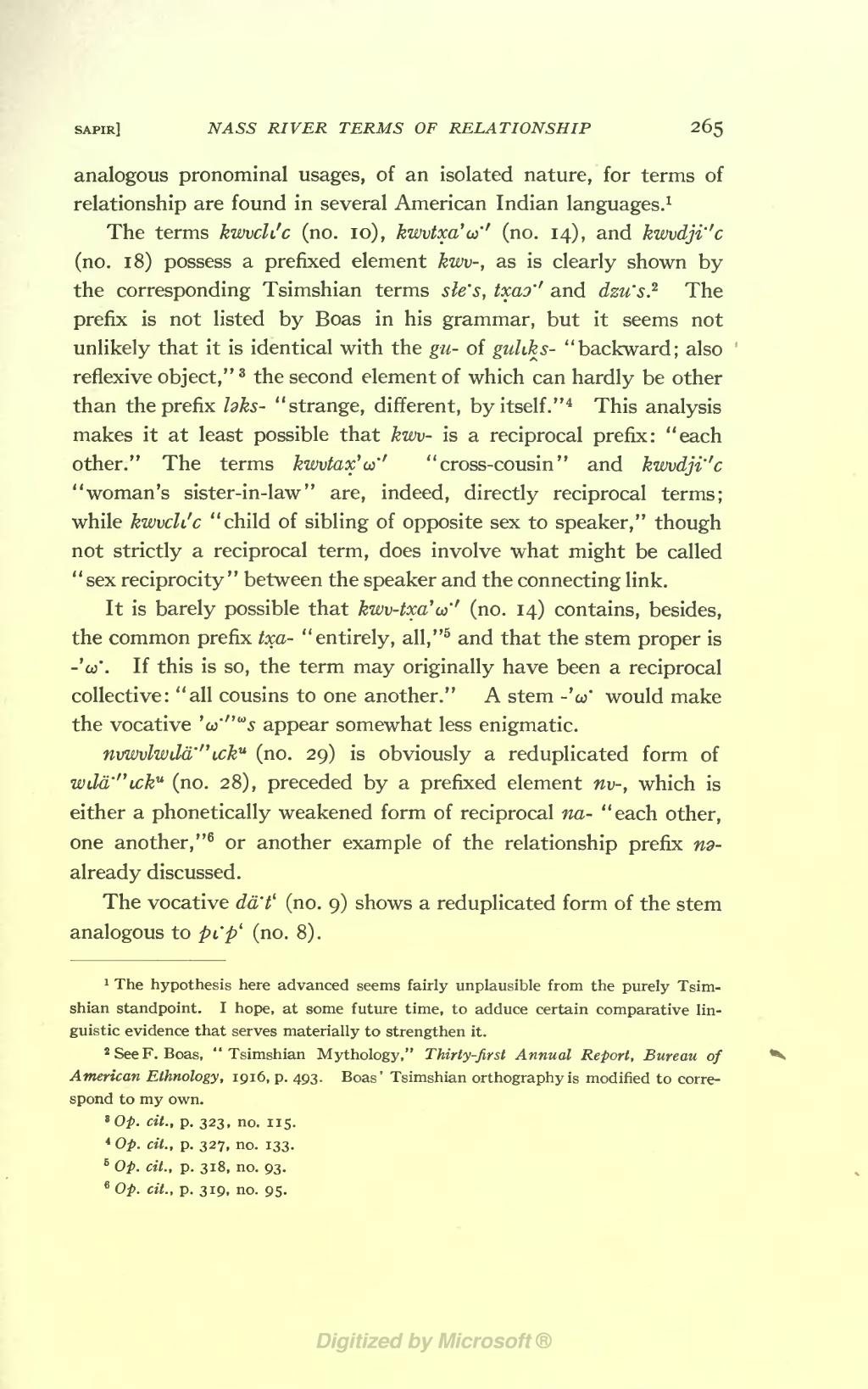SAPIR] NASS RIVER TERMS OF RELATIONSHIP 265
analogous pronominal usages, of an isolated nature, for terms of relationship are found in several American Indian languages. 1
The terms kwvch'c (no. 10), kwvtxa'u (no. 14), and kwvdji' f c (no. 1 8) possess a prefixed element kwv-, as is clearly shown by the corresponding Tsimshian terms sle's, txao' 1 and dzu's. 2 The prefix is not listed by Boas in his grammar, but it seems not unlikely that it is identical with the gu- of guhks- "backward; also reflexive object," 3 the second element of which can hardly be other than the prefix hks- "strange, different, by itself." 4 This analysis makes it at least possible that kwv- is a reciprocal prefix: "each other." The terms kwvtax'u "cross-cousin" and kwvdjic "woman's sister-in-law" are, indeed, directly reciprocal terms; while kwvch'c "child of sibling of opposite sex to speaker," though not strictly a reciprocal term, does involve what might be called "sex reciprocity " between the speaker and the connecting link.
It is barely possible that kwv-txa'u (no. 14) contains, besides, the common prefix txa- "entirely, all," 5 and that the stem proper is -'o>*. If this is so, the term may originally have been a reciprocal collective: "all cousins to one another." A stem -'co* would make the vocative V' w s appear somewhat less enigmatic.
nvwvlwdd'" i,ck u (no. 29) is obviously a reduplicated form of wJa'"tck* (no. 28), preceded by a prefixed element nv-, which is either a phonetically weakened form of reciprocal na- "each other, one another," 6 or another example of the relationship prefix m- already discussed.
The vocative dd't' (no. 9) shows a reduplicated form of the stem analogous to pCp' (no. 8).
��1 The hypothesis here advanced seems fairly implausible from the purely Tsim- shian standpoint. I hope, at some future time, to adduce certain comparative lin- guistic evidence that serves materially to strengthen it.
2 See F. Boas, "Tsimshian Mythology," Thirty-first Annual Report, Bureau of American Ethnology, 1916, p. 493. Boas' Tsimshian orthography is modified to corre- spond to my own.
3 Op. cit., p. 323, no. 115.
4 Op. cit., p. 327, no. 133. 6 Op. cit., p. 318, no. 93.
6 Op. cit., p. 319, no. 95.
�� �
